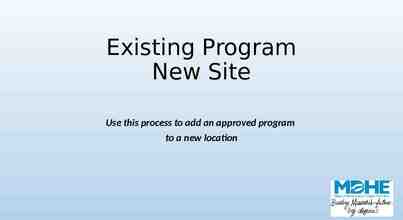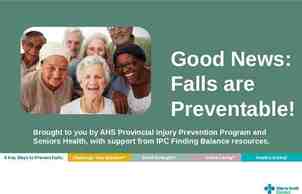Building Cultural Competence & Proficiency For more
15 Slides346.14 KB
Building Cultural Competence & Proficiency For more information, contact the Center for Diversity and Health Equity at healthequity @aafp.org
Learning Objectives Define and describe cultural proficiency Understand the need for culture competence and culturally proficient care Identify the key aspects of cultural proficiency Describe culturally proficient services that can be implemented in primary health care settings Review Discussion Questions/Guide 2
Defining Cultural Proficiency Cultural proficiency is: the knowledge, skills, attitudes, and beliefs that enable people to work well, respond effectively to, and be supportive of people in cross-cultural settings. Family physicians care for a wide variety of patients and need these skills to offer better patient care. American Academy of Family Physicians. Cultural Proficiency: The Importance of Cultural Proficiency in Providing Effective Care for Diverse Populations, updated 2014. Leawood: American Academy of Family Physicians; 2014: Position Paper. 3
Defining Cultural Proficiency Not solely the acceptance of cultural differences Care and services are responsive to the cultural and linguistic needs of all individuals American Academy of Family Physicians. Cultural Proficiency: The Importance of Cultural Proficiency in Providing Effective Care for Diverse Populations, updated 2014. Leawood: American Academy of Family Physicians; 2014: Position Paper. 4
Defining Cultural Competence Cultural competence is a set of congruent behaviors, attitudes, and policies that come together and enable a system, agency or professionals to work effectively in cross-cultural situations. Five essential elements contribute to the ability to become more culturally competent which include: Valuing diversity Having the capacity for cultural self-assessment Being conscious of the dynamics inherent when cultures interact Having institutionalized culture knowledge Having developed adaptations to service delivery reflecting an understanding of cultural diversity Policy Brief 1: Rationale for Culture Competence in Primary Care. Washington, DC: National Center for Cultural Competence, Georgetown University Center for Child and Human Development. Goode TD and Dunne C. 5
Need for Cultural Competence and Culturally Proficient Care Respond to current and projected demographic changes in the United States. Eliminate long-standing disparities in the health status of people of diverse racial, ethnic and cultural backgrounds. Improve the quality of services and primary care outcomes. Meet legislative, regulatory and accreditation mandates. Decrease the likelihood of liability/malpractice claims. Policy Brief 1: Rationale for Culture Competence in Primary Care. Washington, DC: National Center for Cultural Competence, Georgetown University Center for Child and Human Development. Goode TD and Dunne C. 6
Key Aspects of Cultural Proficiency Organizational/Systems Organizations embrace the principles of equal access and non-discriminatory practices in service delivery Practice & Service Design Tailored services are designed and implemented to meet the unique needs of the individuals and communities served Community Engagement The needs of the communities are determined by the community and members are full partners in decision making Family & Consumers There is an inherent awareness that “family” is defined differently by different cultures Culturally Competent Guiding Values & Principles. Washington, DC: National Center for Cultural Competence, Georgetown University, Center for Child and Human Development. Goode TD and Dunne C. 7
Key Aspects of Cultural Proficiency National Standards for Culturally and Linguistically Appropriate Services (CLAS): The National CLAS Standards are a set of 15 action steps intended to advance health equity, improve quality, and help eliminate health care disparities by providing a blueprint for individuals and health and health care organizations to implement culturally and linguistically appropriate services. National Standards for Culturally and Linguistically Appropriate Services in Health and Health Care: A Blueprint for Advancing and Sustaining CLAS Policy and Practice. Office of Minority Health, US Department of Health and Human Services, 2013. 8
Key Aspects of Cultural Proficiency National CLAS Standards cont. Principle Standard: Provide effective, equitable, understandable, and respectful quality care and services that are responsive to diverse cultural health beliefs and practices, preferred languages, health literacy, and other communication needs. These standards are important because they provide guidance on effectively introducing cultural competence into healthcare services. 9
Cultural Proficiency in Primary Care What can you do to improve the cultural proficiency in your organization? Identify challenges or existing needs in your community Brainstorm solutions Determine needed resources Take your first step 10
Cultural Proficiency in Primary Care Convene cultural competent workgroup or task force Determine percentage of population affected by healthcare disparities Conduct assessment of staff to determine developmental needs Seek Resources Convene brown bag lunches to educate key staff Build a network of helpers Network with advocacy orgs. Planning, Implementing and Evaluating Culturally Competent Service Delivery Systems in Primary Health Care Settings. Washington, DC: National Center for Cultural Competence, Georgetown University, Center for Child and Human Development. Goode TD 11
Self-Assessments Cultural and Linguistic Competence Health Practitioner Assessment (CLCHPA) Cultural and Linguistic Competence Policy Assessment (CLCPA) Cultural Competence Organizational Assessment National Center for Cultural Competence, Georgetown University, Center for Child and Human Development. Washington, DC. Goode TD 12
Discussion Questions/Guide Does the definition of Cultural Proficiency reflect your own thoughts? What challenges do you experience as a practitioner or within your system when addressing the needs of diverse populations? What simple improvements do you think could be implemented in the short term? What additional resources are needed to become more successful at addressing the needs of diverse populations? Have you personally or has your organization completed a selfassessment on cultural and linguistic competence? 13
2018 American Academy of Family Physicians. All rights reserved. All materials/content herein are protected by copyright and are for the sole, personal use of the user. No part of the materials/content may be copied, duplicated, distributed or retransmitted in any form or medium without the prior permission of the applicable copyright owner. 14




















